Introduction
The UK insurance market is facing turbulent times. The impact of demographic
changes, evolving customer needs and the opportunities afforded
by digital technology are having a disruptive effect on the industry.
Combined with increasing regulatory scrutiny and financial reporting
requirements, these changes are challenging traditional insurance business
models. Many insurers are responding by modernising their internal
operations and business strategies.
This report aims to shed light on the current population of chief executives
of UK-based insurance companies and to provide insights about where
the next generation of leaders are likely to come from.1
Diversity

UK insurance CEOs are a strikingly homogeneous group. The overwhelming majority
(92%) are men and there is very little ethnic diversity at senior leadership level in the
industry. The average age of CEOs is 53 years.
Current CEOs are predominantly UK citizens (76%), with a handful of other nationalities
in the mix, including South Africa (3 CEOs), USA, France, New Zealand, Ireland (2 each),
Greece, India and Spain (1 each).
Education and qualifications
The academic backgrounds of insurance CEOs vary widely. Whereas the majority of CEOs
(78%) have a bachelor’s degree, only a quarter have an MBA. 22% of CEOs do not have
any higher education degree.
Educational background: highest degree earned

Further investigation into their career trajectories reveals that 13 current CEOs started
working in the insurance industry straight from school and obtained diploma qualifications
in actuarial science while in employment. These executives have stayed within the
sector for the majority of their careers, with an average of 20 years of insurance experience.
This pattern is only found among male executives; all female CEOs have either a
minimum of a bachelor’s degrees and four out of the five female CEOs have worked
outside the insurance sector at some point in their careers.
International experience
63% of current CEOs have spent their entire careers inside the United Kingdom during
their careers. Of the 37% of CEOs with international experience, the most common countries
in which they gained that experience were US (5), Australia (2), New Zealand (2),
Japan (2), Singapore (2), South Africa (2), Switzerland (2), and France, Germany, Spain, the
Netherlands, India (one each). On average, these executives spent 11 years outside the UK.
International experience
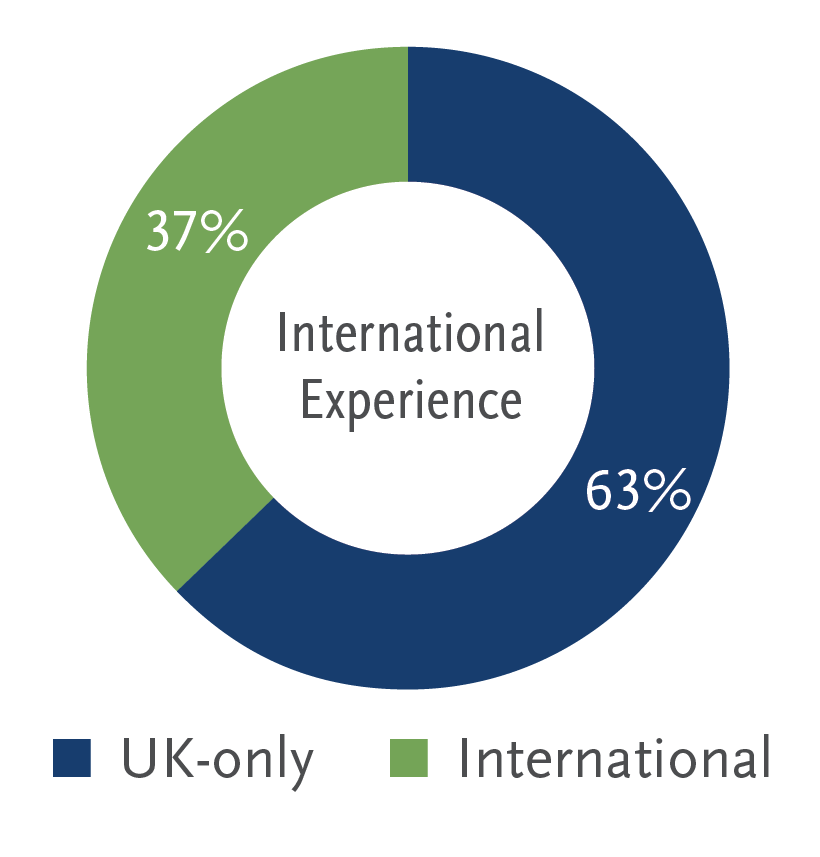
Previous experience
CEOs have an average of 29 years’ experience in professional life, of which 19 years have
been spent in the insurance industry. 75% of CEOs had experience of the insurance
industry prior to their appointment. 25% of CEOs were new to the industry at the time of
their appointment. CEOs have worked for three other companies on average prior to their
appointment, although 7% of CEOs have been at the same organisation since the start of
their careers.
The average tenure of CEOs in the UK insurance industry is 4.2 years. By contrast, the
average tenure of CEOs running the top 150 FTSE companies is 5.5 years.2
Current CEO tenure
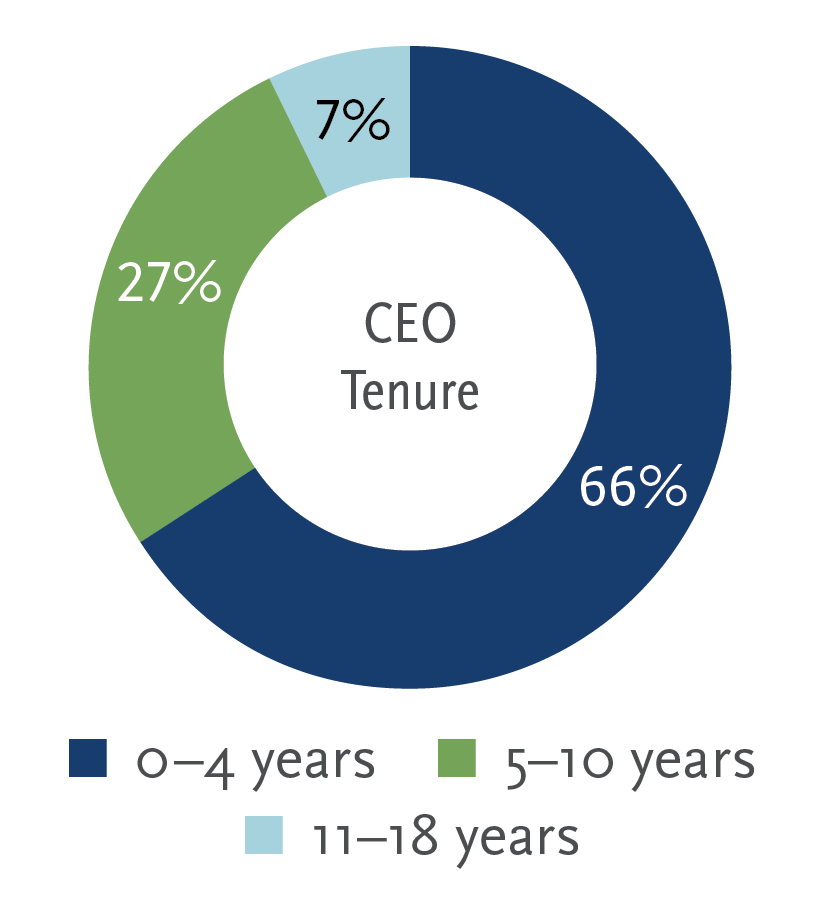
Internal appointments
One of the most compelling findings shows that 59% of current CEOs were promoted
from inside their respective organisations — a higher proportion of internal appointments
than is found among FTSE 350 companies. Internal appointments are more
common in large multinational insurance companies, which tend to offer executives
more development opportunities including exposure to different markets and business
units; this in turn results in a broader pool of internal candidates for the role of CEO.
Internal vs external appointments
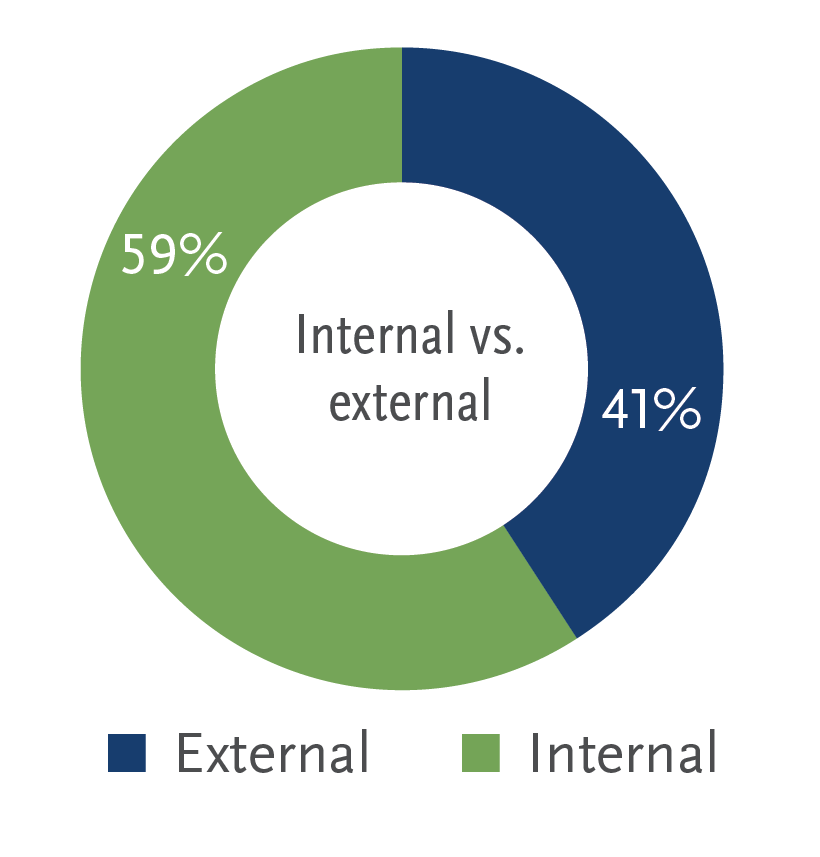
Insider CEOs spent an average of 10 years at the company before their appointment to
the top job. As mentioned above, 7% of CEOs have been employed by the same insurance
group since the beginning of their careers which have spanned 29 years on average.
Tenure at the company before CEO appointment
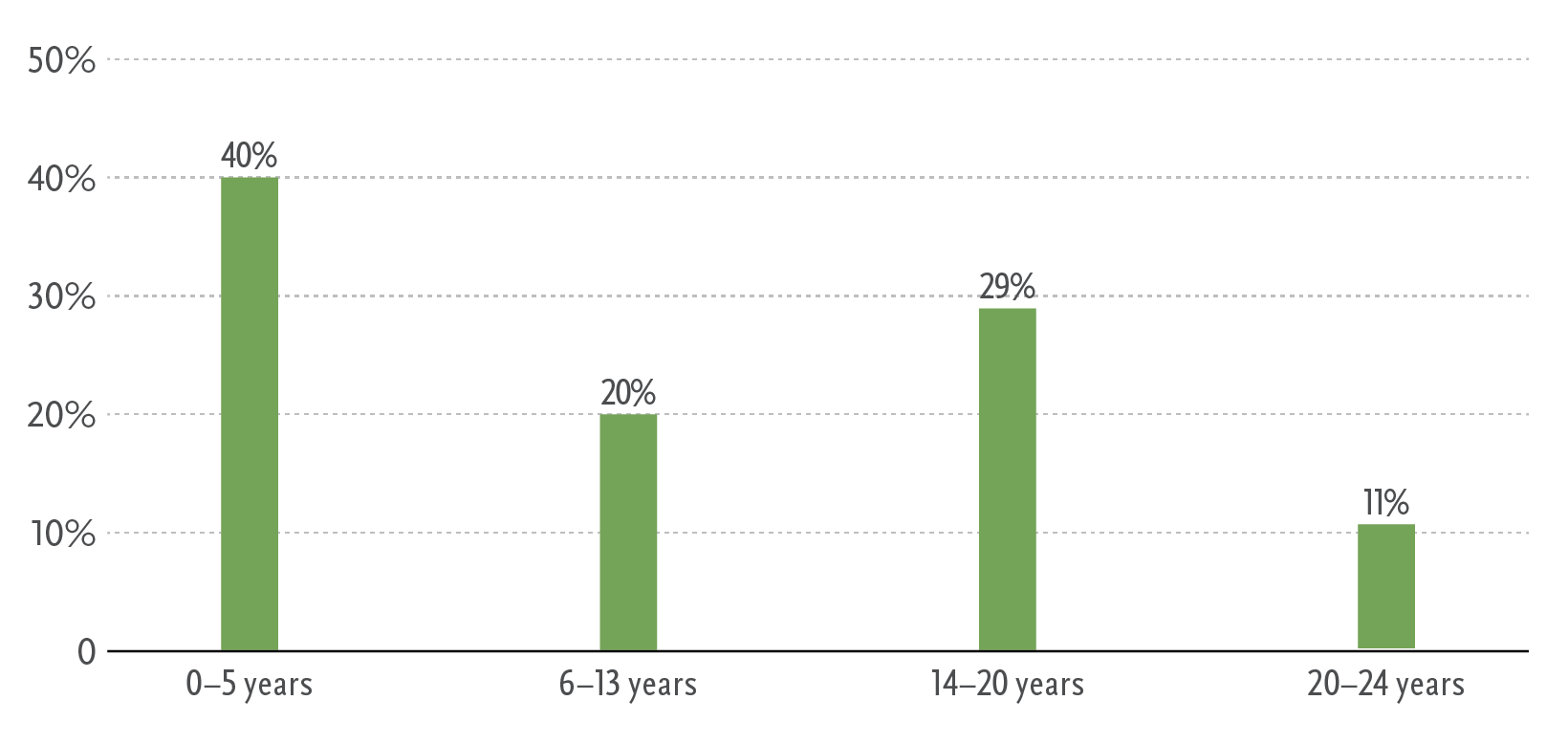
Before assuming full responsibility for group or UK-based activities, organisation internally
promoted executives had been in some kind of general management role with
regional or divisional responsibility.
Role held prior to appointment as CEO
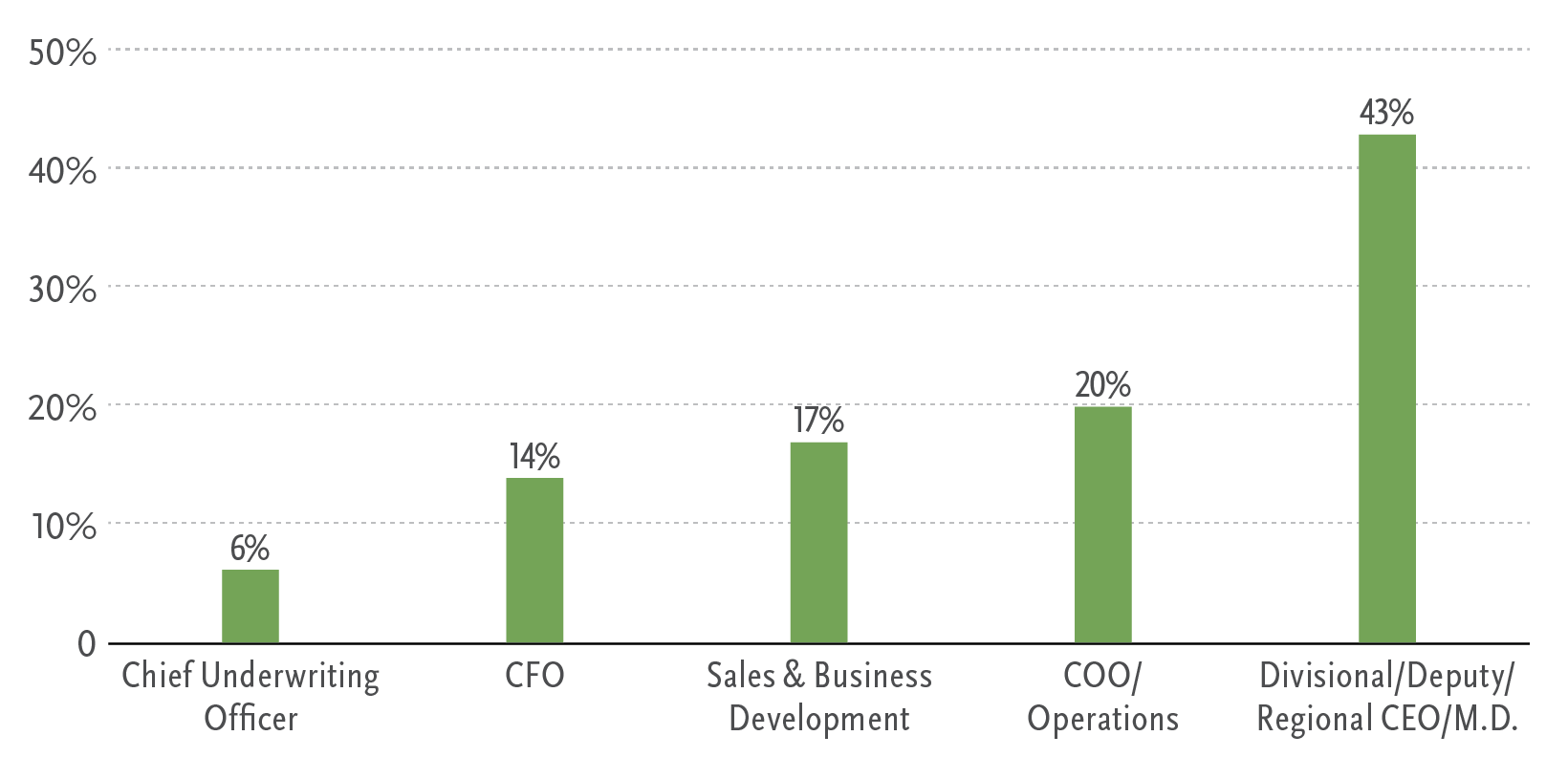
Other C-suite roles have also been stepping stones to the CEO job, most commonly COO
(in seven cases) and CFO (in five cases). Six CEOs in the cohort had been responsible for
a combination of retail insurance, sales and business development. Only two CEOs had
previously served as a chief underwriting officer.
External appointments
Of the 41% of CEOs who were external appointments, 58% came from other insurance
firms. Other industry backgrounds prior to appointment included banking (29%),
consulting (4%), consumer goods (4%) and retail electronics (4%). As with the internally
promoted executives, the vast majority of externally appointed CEOs had previously held
general management roles within other organisations.
External appointment — previous industry
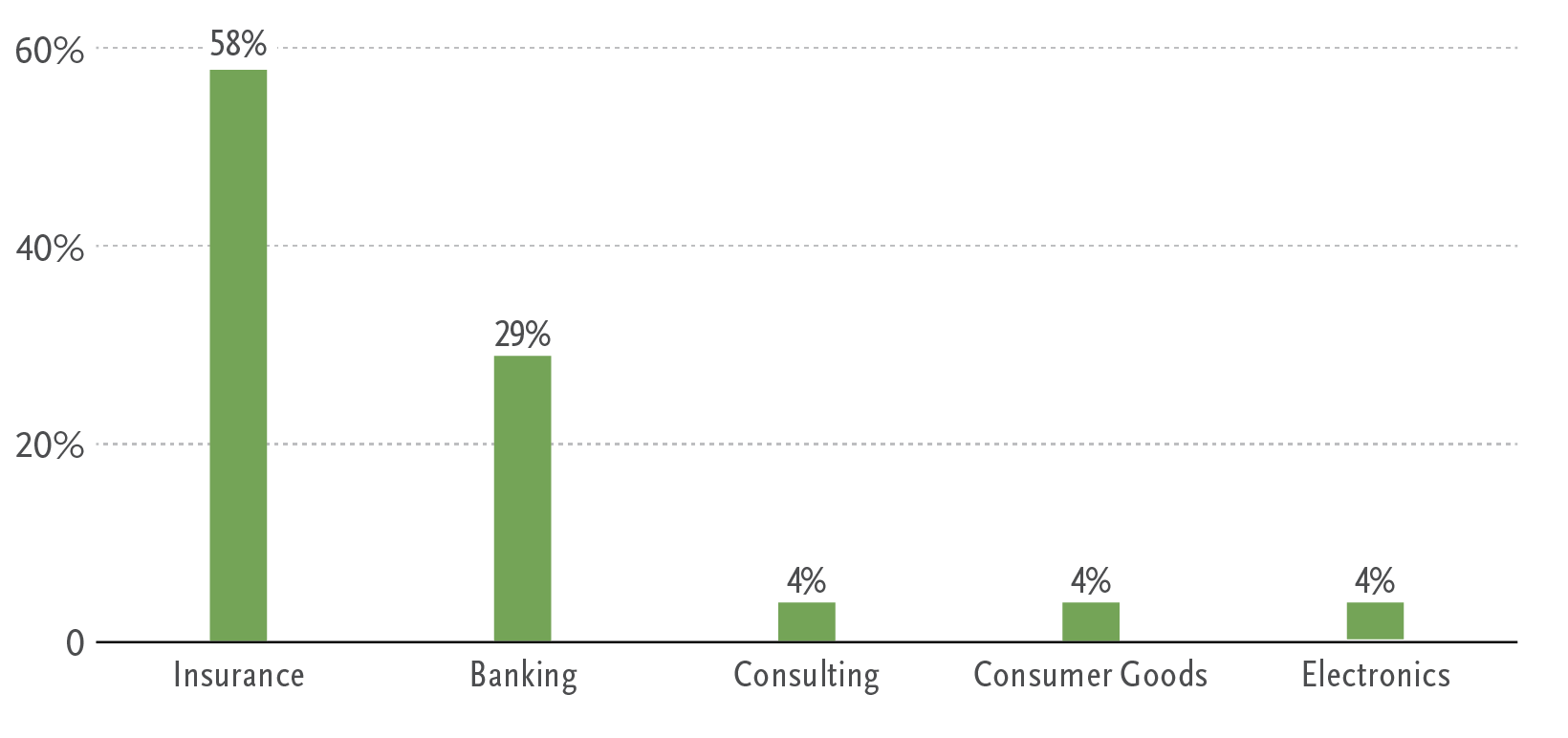
External appointment — previous function
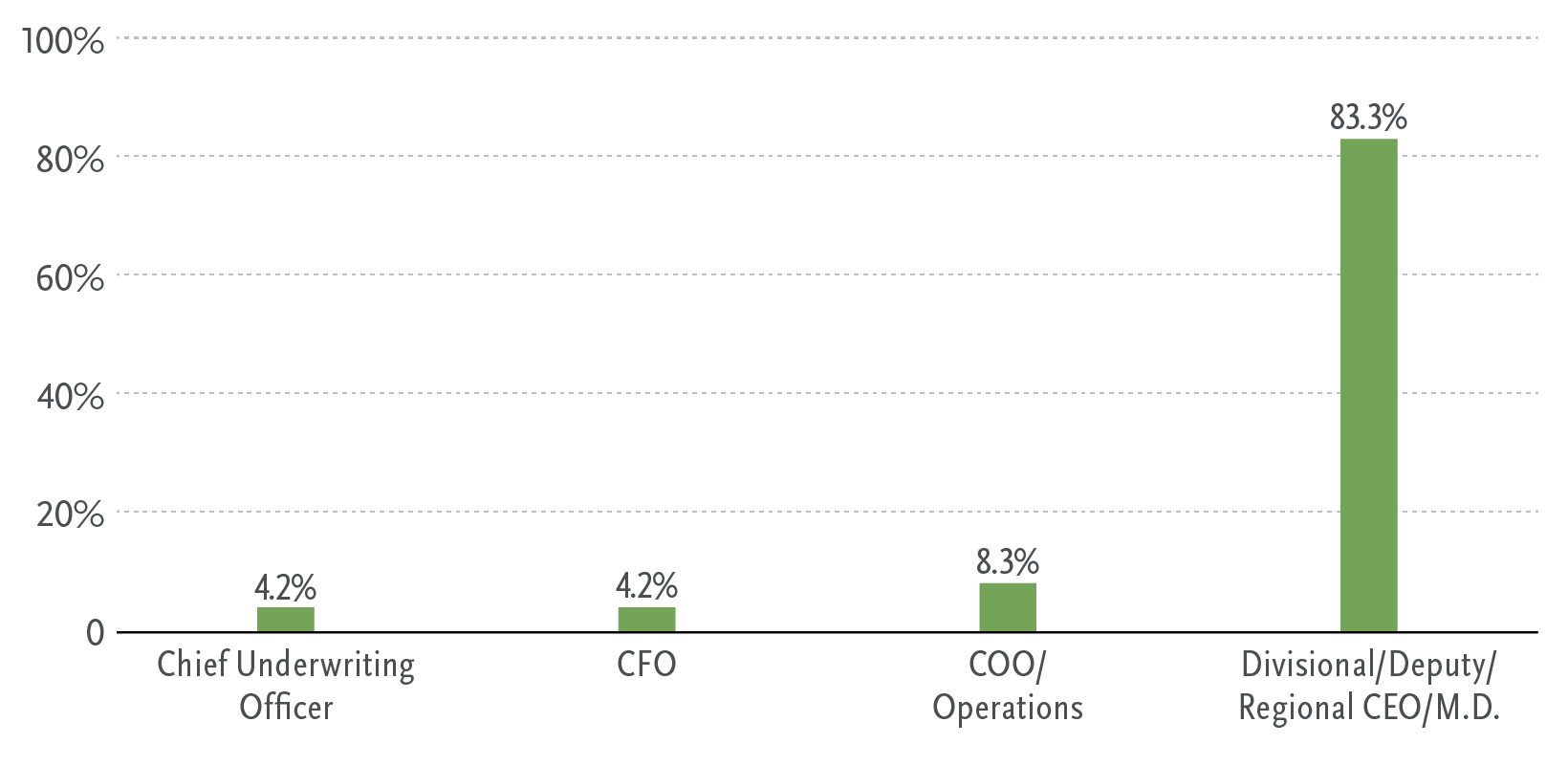
Creating the right corporate culture
Culture is a critical success factor in the insurance
industry. We believe it is just as important as
strategy and that leaders should be spending their
time rigorously managing their culture. When you
align culture to strategy you get good results.
Culture is the tacit social order of an organisation:
it shapes attitudes and behaviours in wideranging
and durable ways. Cultural norms define
what is encouraged, discouraged, accepted or
rejected within a group. Culture can be challenging
to manage because much of it is
anchored in unspoken behaviours, mindsets and
social patterns.
Culture and leadership are inextricably linked.
Indeed, leaders can shape culture through their
conscious and unconscious actions. However,
before they can bring about cultural change they
must first become aware of the culture that
operates in their organisations and map the
specific effects of their culture on people and
performance.
There are two key dimensions to understanding a
company’s culture: people interactions and
response to change.
People interactions
How independently or interdependently do
people like to work? Does the organisation place
greater value on autonomy and competition or
does it emphasise managing relationships and
group effort?
Response to change
Does the organisation emphasise stability,
consistency and predictability or flexibility, adaptability
and receptiveness to change?

Spencer Stuart has developed a culture
alignment framework that describes eight
primary and universal styles that shape all
social and cultural behaviour. Each style
represents a distinct and valid way to view
the world, solve problems and be
successful, both as individuals and as
organisations. While no single style can
fully depict a culture or personal style, individual
styles and organisational cultures
tend to be more heavily weighted in two to
three styles that reflect their orientation
toward people and change.
For more information on Spencer Stuart’s approach to culture, read “The Leader’s Guide to Corporate
Culture”, Harvard Business Review, January–February 2018.
The diversity challenge
Gender diversity remains a hot topic in the UK insurance sector. Today, only 8% of CEOs
are women and considerable progress will be needed if companies are to reach the 33%
target for women on leadership teams by 2020, as published in the Hampton-Alexander
Review3. There is an increasing body of research pointing to the value of gender diversity
in improving productivity and financial performance, and many initiatives have been designed to address the imbalance. Despite ongoing attention to the issue of gender
disparity in leadership, progress for women remains mixed.
Based on our work and conversations with leaders from companies that are active in promoting diversity, the most effective approaches do the following:
Signal the importance of gender diversity from the top
Evidence shows that increasing diversity requires clear and consistent support from the
CEO and senior management, and male leaders generally.
Remove unconscious bias in assessment
Women can find themselves at a disadvantage in hiring or promotions when subjective
measures such as “gravitas” are used to evaluate candidates for senior roles — like the
5’2” female executive being compared to the 6’-plus male candidate on their “presence.”
Use data, not assumptions, to evaluate culture fit
Too often, when people think about how an individual fits with a team or organisational
culture, they think in terms of similarities in backgrounds or interests — someone they
recognize based on their own experience. But “sameness” is not the same as culture fit,
and using it as a proxy for culture fit can put women at a disadvantage over time.
Provide support for women in leadership roles
Making progress on gender equality requires not just that women be placed in senior
roles, but also that they are successful in them. This includes identifying mentors or peer
mentors and encouraging women to build an intra-company network and get involved in
the broader community to ensure they gain a foothold.
Make work/life flexibility available for everyone, not just women
Ironically, well-intentioned initiatives meant to provide women with more work/life
balance and flexibility can hurt women in the long run, when they have the effect of
placing them outside the “norm”. A better approach is to think about creating a workplace
that is more flexible about how and where work is performed — for everybody.
Be bold
To truly transform the composition of a company’s workforce and leadership, organisations
have to be willing to disrupt the status quo.
Companies that want to increase the number of women in leadership roles need strong
advocacy from the CEO, an assessment approach that minimizes bias and assumptions
about culture fit, support for women hired from the outside and a willingness to take
bold actions.
Methodology
Each individual whose career we analysed is the most senior executive in the UK business. Our
research covers each individual’s career history prior to their appointment as CEO. Any additional
roles assumed thereafter are not considered in the study.
We analysed the career profiles of 59 CEOs through a combination of information in the public
domain, data from BoardEx and Spencer Stuart’s proprietary research.
Our results are based on data from 57 companies. To view the full list, please download the article.
1 Each individual whose career we analysed is the most senior executive in the UK business.
We refer throughout to CEOs, although not every UK leader has that title.
2 Source: Spencer Stuart UK Board Index 2017
3 Hampton Alexander Review: Improving gender balance in FTSE leadership, November 2017. This target applies to
the leadership teams of FSTE 350 companies.
4 At the time of writing, AXA is in the process of acquiring XL Group.